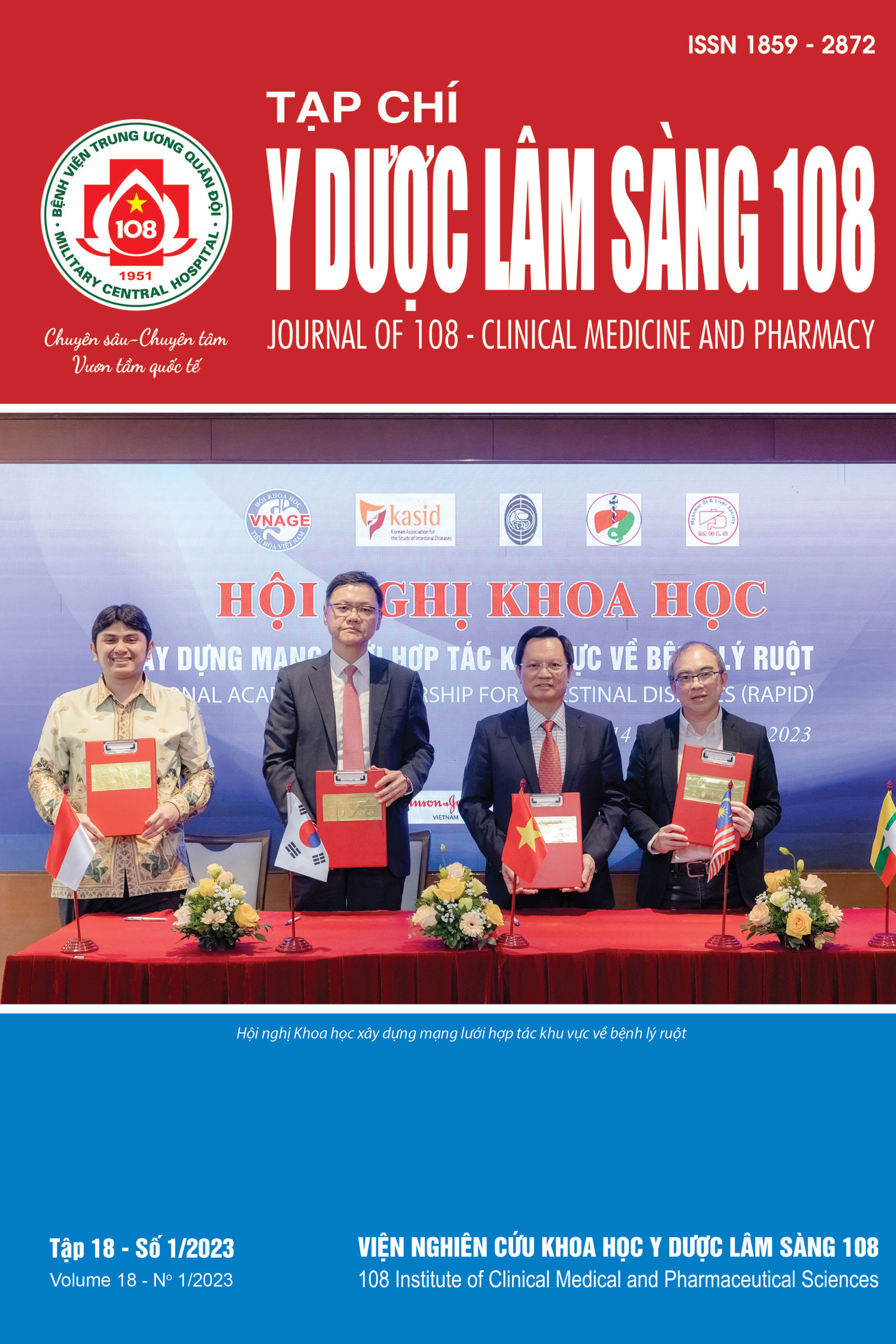The value of Kyoto classification score for the diagnosis Helicobacter pylori infection in patients over 60 years old with chronic gastritis
Main Article Content
Keywords
Abstract
Objective: To evaluate the value of the Kyoto score in the diagnosis of Helicobacter pylori infection in patients over 60 years old with chronic gastritis. Subject and method: A cross-sectional descriptive study on 130 patients over 60 years old with chronic gastritis at 108 Military Central Hospital. Endoscopic findings were assessed according to the Kyoto classification score: Atrophy, intestinal metaplasia, enlarged fold, nodularity, diffuse redness. H. pylori infection was determined by a combination of urease test and histopathology, H. pylori infected if both methods were positive. Result: Of the 130 subjects enrolled, 62/130 (4.7%) had H. pylori infection. The prevalence of mild; moderate; severe atrophy were 36.9%, 60.8%, 2.3%. The prevalence of intestinal metaplasia, enlarged fold, nodularity, diffuse redness were 5.4%, 14.6%, 4.6%, 22.3%. The Kyoto score was distributed from 0 to 4. The Kyoto score had an excellent AUROC (0.907, 95% confidence interval: 0-86-0.955, p=0.000) for predicting H. pylori infection with a cut-off value of 2. The sensitivity, specificity, positive predictive value, negative predictive value and the accuracy were 69.4%, 95.6%, 93.4%, 77.3% and 83.1%. Of the 5 endoscopic features, diffuse redness was the most valuable in diagnosing H. pylori with the highest AUROC (0.688; 95% CI: 0.594-0.781, p=0.048), specificity was 95.6%, the positive predictive value was 89.7%. Conclusion: The Kyoto classification score had a high accuracy in predicting H. pylori infection in patients over 60 years old with chronic gastritis.
Article Details
References
2. Marušić M, Majstorović Barać K, Bilić A et al (2013) Do gender and age influence the frequency of Helicobacter pylori infection? Wien Klin Wochenschr 125(21-22): 714-716. doi:10.1007/s 00508-013-0433-0.
3. Nguyễn Văn Tuấn, Nguyễn Duy Thắng (2013) Nghiên cứu đặc điểm nội soi, mô bệnh học của viêm dạ dày mạn tính thể trợt lồi có H. pylori dương tính ở bệnh nhân cao tuổi. Bệnh viện Nông nghiệp.
4. Nguyen TL, Uchida T, Tsukamoto Y, et al Helicobacter pylori infection and gastroduodenal diseases in Vietnam: A cross-sectional, hospital-based study. BMC Gastroenterol 10: 114. doi:10.1186/1471-230X-10-114.
5. Phạm Hồng Khánh, Vũ Văn Khiên, Trần Thị Hyyền Trang (2021) Tần suất và các yếu tố độc lực của Helicobacter pylori ở bệnh nhân viêm dạ dày mạn. Tạp chí Y học Việt Nam.
6. McCarthy DM (1991) Helicobacter pylori infection and gastroduodenal injury by non-steroidal anti-inflammatory drugs. Scand J Gastroenterol Suppl 187: 91-97. doi: 10.3109/00365529109098230.
7. Ohkuma K, Okada M, Murayama H et al (2000) Association of Helicobacter pylori infection with atrophic gastritis and intestinal metaplasia. J Gastroenterol Hepatol 15(10): 1105-1112. doi:10.1046/j.1440-1746.2000.02305.x
8. Zhao J, Xu S, Gao Y, et al (2020) accuracy of endoscopic diagnosis of Helicobacter pylori Based on the Kyoto classification of gastritis: a multicenter study. Front Oncol 10: 599218. doi:10.3389/fonc.2020.599218.
 ISSN: 1859 - 2872
ISSN: 1859 - 2872
